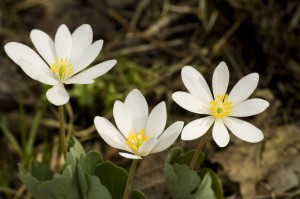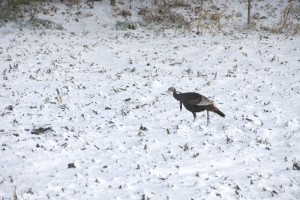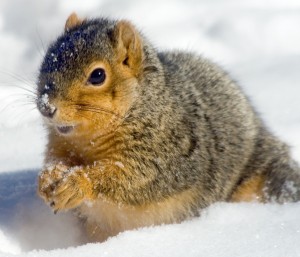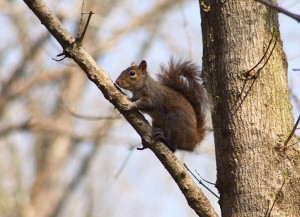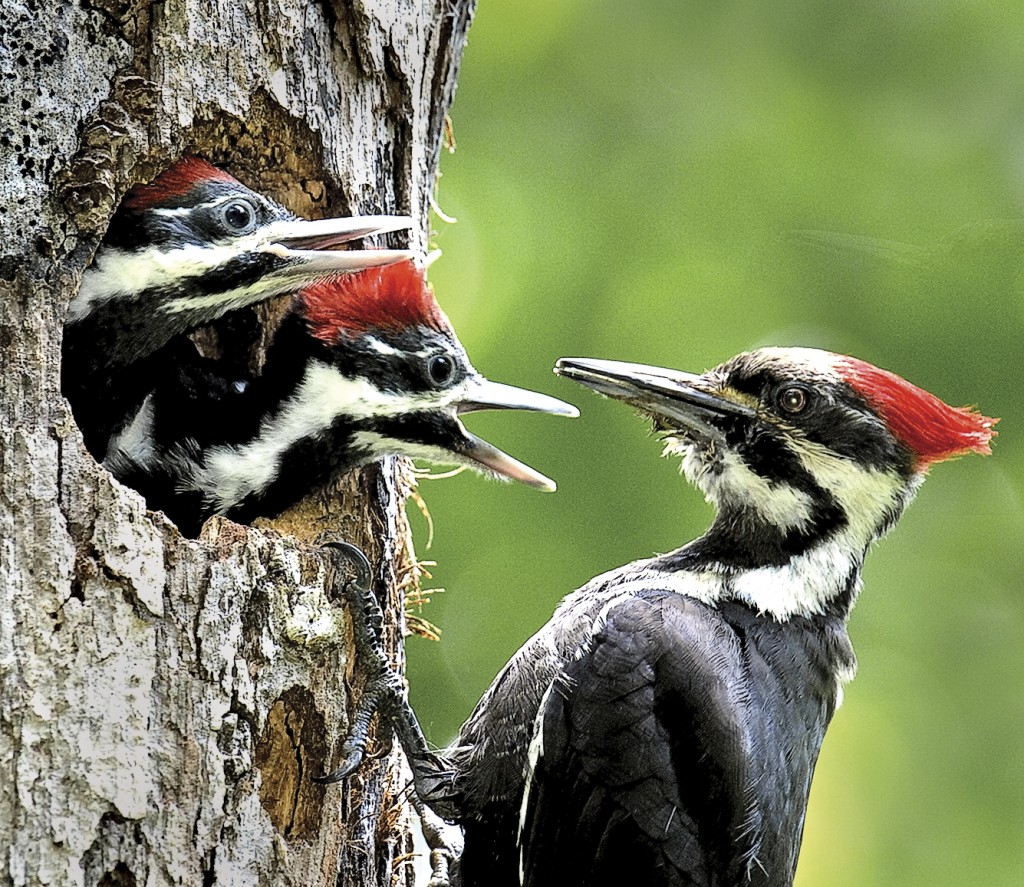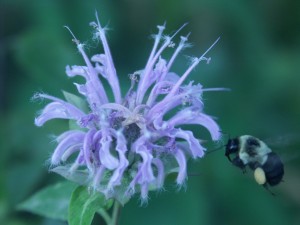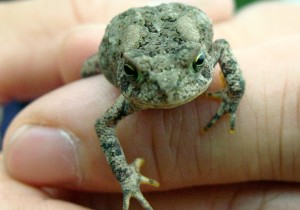Spring, Sprung and Snapped, Sprouts Again
What started as a beautiful and beautifully early spring in our bluff lands transmuted into a second winter. Dogwoods, just into their first flush of white bloom alongside the brilliant magenta red buds, now are burned brown by frost. But robins are singing from tree limbs incongruously clothed in browned and dying foliage and new shoots from perennial plants already are pushing up from through earlier stems turned to mush by repeated cold. Trees and shrubs, drawing on sugar reserves, will grow fresh green leaves and bring a partial second spring to the regions hit by the cold snap — a large area
encompassing much of the central and eastern U.S. New foliage, however, will not be accompanied by significant re-flowering and later fruiting. Birds and mammals may have to turn to alternate sources of food if their normal mast foods are unavailable.
Mast, a term known from Old English and derived from the Western Germanic word maest, refers to the nuts produced by beech, oaks, hickories, and walnuts, and also is extended to cover soft fruits, such as wild grapes and dogwood berries. Though originally a name for wild foods consumed by domesticated pigs, mast most often now describes the common forest-produced food sources of wildlife. A poor mast year — which 2007 may be — means a poorly stocked natural food larder and results in increased competition for remaining resources.
Wild turkeys, for example, eat oak acorns as their primary staple, but are omnivorous and will relish bulbs, dogwood berries, grass and sedge sprouts, and, even, crawfish. Deer and squirrels, too, will switch from a diet of mast nuts to — unfortunately for farmer and gardener — whatever is easily available, whether wheat seedlings, corn, strawberries, or ornamental bushes. The conjunction of forest, field and yard in our bluff lands may, in 2007, become a smorgasbord for critters as a result of the April chill.
The bluff lands in Monroe and Randolph Counties are the largest forested tract in Southwestern Illinois and are among the 50 largest forested areas in the state. The sheer size of our aggregate woodlands, about 25,000 acres, and their relatively unbroken expanse results in a rich diversity of plants and animals, many rarely found or in such abundance elsewhere in Illinois. The presence of a particular species can indicate that a forested area is both sizable and healthy. The rarely seen Southern Flying Squirrel is such an “indicator species” because they only prosper in large tracts of old-growth forest.
One of three species of squirrels in our bluffs, an individual Southern Flying Squirrel is about eight inches long and five ounces in weight. Belying their name, they do not fly on wings. They glide up to 100 feet between trees by stretching out the layers of loose skin attached from front leg to hind leg on both sides of their bodies. Fully nocturnal, flying squirrels become active at dusk and, like other creatures of the night, have very large eyes, seemingly covering half their faces. It is a rare and lucky blufflander who has seen a flying squirrel — a look into those dark, large-as-saucer-eyes makes one never want to leave such rich lands as the bluffs.
Far less secretive and, so, much better known, are the two species of tree squirrels, Eastern Fox Squirrel and Eastern Gray Squirrel. Seemingly tireless and always on the alert to scold and tattle on any trespasser, both species breed in March and both still are raising their young in nests in May. Both species’ babies are born hairless and blind and require several months of care before fending for themselves. But, all similarities between the two species end there; in all other respects they are two very different kinds of squirrels.
Adult fox squirrels, at three pounds, are the largest. Their size makes them awkward in trees and they often take a tumble. Preferring more open wooded stands and the forest edge, they are more self-contained and less excitable. They often sleep in through the mornings and won’t go out at all during bad weather. While antisocial and intolerant of other squirrels, they quickly grow accustomed to and do not seem to mind people around them. They build numerous nests out of leaves in the treetops and move between nests constantly. Acorns and nuts are their principle food and they are notorious hoarders, stashing and cacheing in hundreds of little places.
Half the size of their fox squirrel cousins, Eastern Gray Squirrels are more wary and reclusive and live deeper in the forest. Friendly to each other, they often den together. In addition to acorns and nuts, gray squirrels happily raid cornfields and vegetable gardens and also eat fruits, as well as mushrooms and other fungi. Food not immediately consumed is stored in their den. Disdaining leaf nests, gray squirrels prefer to den in tree cavities, often using a woodpecker’s previous digs, a nesting real estate option also used by flying squirrels.
A developer of such choice locations is the Pileated Woodpecker, another common resident of our bluffs. About the size of a crow, pileateds are our largest woodpecker, and will breed in May. They are another indicator species of forest health, for a breeding pair requires large blocks of forest with numerous old-growth trees and large standing snags. Unlike other woodpeckers, pileateds mate for life, roosting in separate trees during the
winter, but feeding within the same territory during the day; they renew their nuptial bonds each spring and will fight off intruders. They are cavity nesters and drill out their dwellings in dead snags. When they choose to not reoccupy an old nest the cavity quickly is taken over by squirrels, European Starlings or Wood Ducks.
Pileated Woodpeckers’ nest cavity openings are large and oval shaped. Their food excavations tend to be a distinctive rectangular shape. Their primary food is carpenter ants which can infest the interiors of live trees. Pileateds can detect the ants, even deep inside a tree, apparently by sound, and then drill to get at the ants. Female pileateds lay one clutch of eggs each year. The male incubates the eggs during the night and both parents care for the hatchlings through the three to four months of training the young require. The drumming of pileateds — slow, but powerful and first accelerating then trailing off at the end — can be heard for great distances and is the rhythmic beat of forest health.
By early May another song of woodland bounty begins to echo upward from the leaf-littered forest floor as Ovenbirds return to breed. Their song gives them an alternate common name, “teacher-bird,” and is a rising crescendo that sounds like “er-teach, er-teach, er-Teach, er-TEACH” that may seem tiresome to youngsters (and their parents) looking forward to the school year’s end. The six-inch long birds, with olive upperparts, bold white eye-ring, and black streaks on the white breast, live almost entirely on the forest floor. Their nest, built of dried leaves and other vegetation, is constructed in a scrape made by the female on the ground, often near a trail or woodland road. It is a lucky observer who is able to spot the camouflaged nest, which, by its dome shape, resembling an old-fashioned Dutch or beehive oven, gives Ovenbird its name. Primarily carnivorous, Ovenbirds seek small insects, snails, spiders, and, rarely, small frogs and lizards, by poking into and turning over leaf litter on the ground. They most often frequent upland forests with fairly dry conditions and flourish only in areas with fairly large, unfragmented forests that contain abundant leaf litter, fallen logs and vegetative debris.
Among the plants that Ovenbirds forage around are Sweet Cicily which begins blooming in the bluffs in May. The three-foot upward branching plant has three-part lobed and hairy leaves. Tiny, five-petaled white flowers are arranged in umbrella-like sprays. Sweet Cicily can be found throughout the woods. Its carrot-like roots contain anise oil and early settlers relied on it to flavor cookies and candies.
May is mint month in the bluffs and two common natives will be blooming. Like all members of the mint family, both are square-stemmed. Hairy Horse Mint, or Pagoda Plant, is two feet tall, and has opposite, small-toothed leaves. Its tiny, two-lipped, hairy pink flowers are packed into ball-like clusters, with up to four clusters stacked on top of each other, like a pagoda. It can be found in moist, wooded creek hollows. Another mint, Bee Balm, is two and a half feet tall, and has hairy, opposite leaves without stalks. The flowers are bluish-purple in a cluster on a single stem. Each flower has two lips, the lower curving down, the upper arching upward. As the common name indicates, Bee Balm is heavily favored by nectoring bees, a point for caution before sniffing deeply
from the fragrant blossoms! It is found throughout the drier wooded slopes and along roadsides in the bluffs. Leaves of both Hairy Horse Mint and Bee Balm make an excellent tea. Indeed, the alternate name of the group is “bergamot,” the chief flavoring oil and scent ingredient of Earl Gray tea blends. During the Revolutionary War colonists drank “Oswego Tea” made from another and closely related bergamot growing in the Eastern U.S. Forest bounty helped make colonial steadfastness easier to bear.
Of the bluffs’ 15 species of frogs and toads, four will be completing breeding during May. Male breeding calls are easily heard around the numerous sinkhole ponds scattered in and near our woods. American Toads give 20- to 30-second long high-pitched trills. Fowler’s Toads call a short one- to two-second “w-a-a-h.” Cricket Frogs emit a sharp click, like marbles striking together. And, Western Chorus Frogs make a sound like running your finger down the teeth of a comb.
All six of the bluff’s swallowtail butterfly species will be on the wing by May.
The large, showy, slow-flying swallowtails all have hindwing tails. Among them are Illinois’ largest butterfly, the Giant Swallowtail. With a wingspan of six inches, the upperwings are brownish with a diagonal line of yellow spots from the apex of the forewing to the base of the hindwing. The undersides are mostly pale yellow and the color blends into the cream yellow of the insect’s body. The Giant Swallowtail, like most of the other butterflies in this family, depends upon forest trees for its larval lifestage. Giant Swallowtail larvae — called “Orangedogs” — eat the leaves of prickly ash and hoptree in our area. Other swallowtail species depend upon paw paw, sassafras, cherries, or spicebush. The variety of life — the rich diversity we see in our bluffs — signals a healthy, vibrantly alive, and one-of-a-kind forest ecosystem.
Clifftop, a local nonprofit organization, is focused on preserving and protecting area bluff lands.
A version of this article appeared in the May 2 2007 edition of the Monroe County Clarion.
© 2007 all content rights reserved, Clifftop NFP.
Comments are currently closed.

